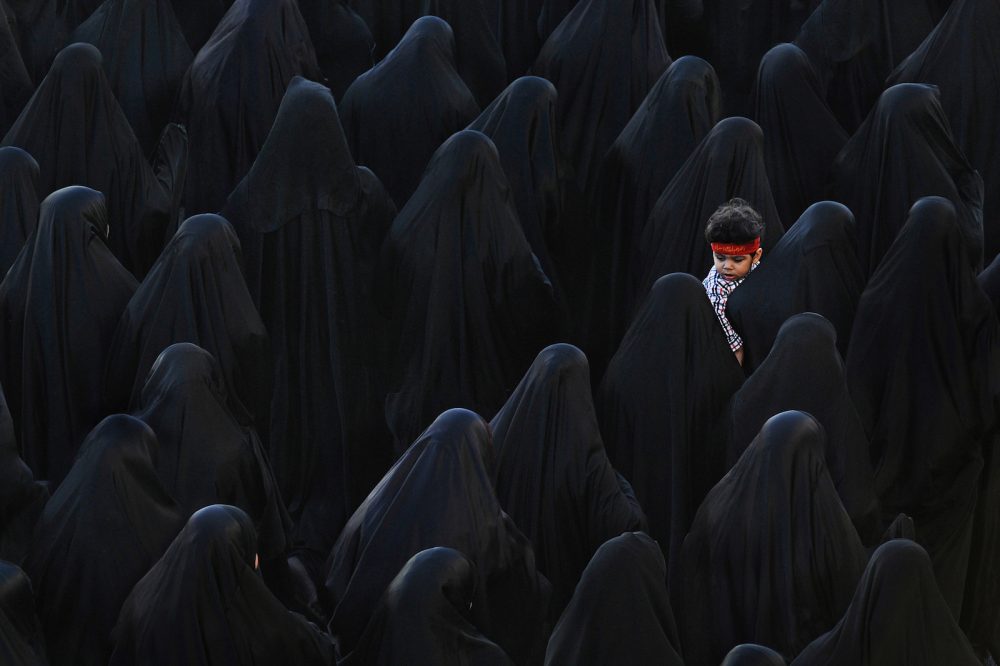The room heaves with black-robed women. They fill every inch of space and chat quietly while waiting for the rest of the neighborhood women to arrive.
An older woman threads her way through the crowd and sits on a cushion in the middle. She begins chanting a story about a man named Hussain. Line by line, she recounts details of the battle that took Hussain’s life over 1,300 years ago.
The old woman begins beating her chest, and a wave of grief sweeps across the room. Women rock and sway and cry as the leader punches out her mournful cries. The others chant loud, sorrowful responses in unison.
After about an hour, women pick up their stiff bodies and shuffle out to claim their shoes from a pile at the doorstep. They return home carrying the grief of Hussain’s martyrdom—a narrative that has shaped this people’s corporate psyche since the early days of Islam.
As the Shia woman beats her chest, a wave of grief sweeps across the entire room.
Women’s mourning rituals like this take place during Ashura, a 10-day period of mourning observed by Shias, who make up about 15 percent of the world’s Muslims.
For Shias, Ashura commemorates the decisive events that ruptured the early Islamic community. After Muhammad’s death in 632, his followers disagreed over who should take his place as the new leader. Some believed that leadership belonged to his descendants. Others wanted to elect a Muslim leader by consensus.
In the decades that followed, the two sides engaged in a fierce power struggle. Shias looked to Muhammad’s grandson Hussain as the rightful leader. But in a battle near Karbala, Iraq, opponents massacred Hussain alongside over 70 companions and family members. This battle led to the split between Sunni Muslims and Shias.
Hussain’s martyrdom has shaped the corporate psyche of Shias since the early days of Islam.
Hussain’s death has come to symbolize martyrdom and suffering, two central values for Shias. His story emphasizes their oppression within the world of Islam and their ideal of self-sacrifice. The public grief that happens during Ashura strengthens their identity as victims who’ve been denied their rightful role within Islam.
On the tenth and final day of Ashura, families march through the streets crying out Hussain’s name. In some communities, men cut small incisions on their heads and beat themselves with chains. Such self-flagellation, however, is not practiced in all Shia communities.
As Shias remember the sacrifice and martyrdom of their slain leader, ask God to reveal to them the One who was slain to redeem people from every tribe, language, people, and nation (Revelation 5:9).
- Pray for Shia Muslims to discover Christ, the risen King who has defeated all sin, every sorrow, and even death itself.
- Ask God to turn their mourning into dancing, leading them from grief to joy and life in Jesus.
- Pray for Shia communities to worship the Lamb of God who has redeemed people from all nations.
Main photo by Freedom House
